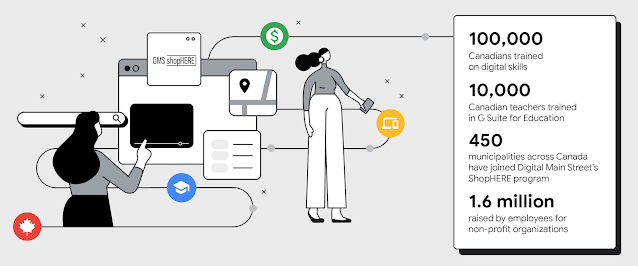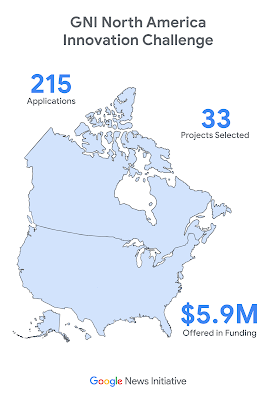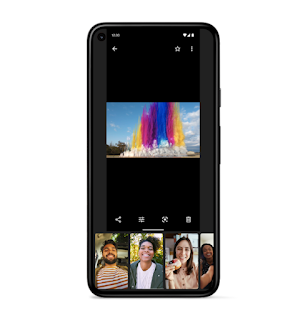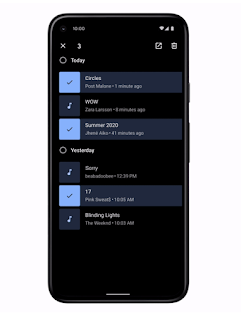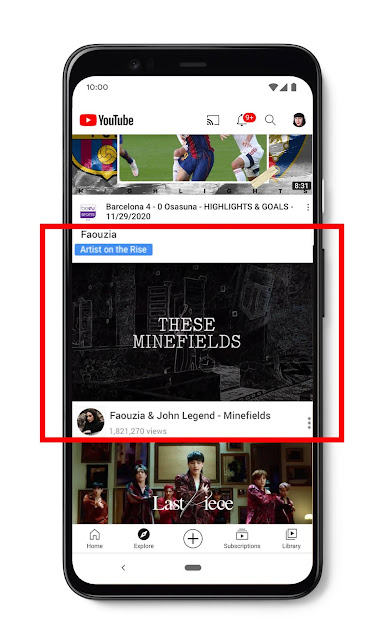We have a long history of working closely with community partners and organizations across Canada to make STEM programs accessible to all students, focusing heavily on breaking down the socio-economic barriers that some students face in receiving this type of education. But this year was different - educators had to navigate how to teach remotely and students were learning virtually at home. So we brought our STEM programs to where teachers and students needed it the most - online.
Supporting teachers and parents to bring the classroom home
At the beginning of the pandemic, we created Teach From Home, a central hub of information, tips, training and tools to help teachers make the transition to online. And for parents, we launched Learn@Home, to provide additional learning content and activities. As schools across the world transitioned online, over 100 million students and educators are now using Google Classroom at no cost - up from 50 million at the beginning of March. To provide additional support for our Canadian teachers, we partnered with EdTechTeam Canada (now Cobblestone Collective) to host live virtual training workshops on how to teach from home with Google Classroom and Meet. We’ve trained over 10,000 teachers this year and our online resources were accessed more than 20,000 times.
Investing in STEM education to prepare today’s young learners for the future of work
Investing in STEM education to prepare today’s young learners for the future of work
We must give children the educational building blocks they need to become the technology builders of tomorrow. From the arts to science to healthcare to tech, the jobs and solutions of the future will be shaped by technology and by the people that build it.
Once classrooms were better equipped to handle online learning, we connected with various school boards across the country to offer CS First training - A free computer science curriculum that makes coding easy to teach and fun to learn. We facilitated CS First activities for 83,000+ Canadian learners this year with CS First, bringing 197,000+ hours of computer science programming into classrooms.
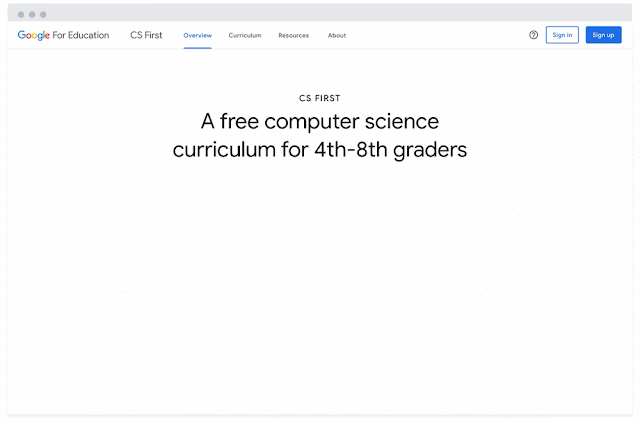
Getting students excited about STEM education is a goal we share with many organizations across Canada. That’s why we worked with local and national partners to offer funding and resources to support additional STEM outreach, and connect with students with barriers to access. Thank you to Canada Learning Code, Kids Code Jeunesse, LAUNCH Waterloo, House of Friendship, Carizon, SHAD, and so many more organizations, for bringing STEM to more learners across the country.
We also saw new progress this year as the Ontario Ministry of Education introduced a new Math curriculum, which includes coding expectations. To support teachers as they implement this new curriculum, we’ve directly mapped the coding expectations to the CS First program so that teachers with little to no experience in computer science can bring coding to life in their classrooms.
As the world moved increasingly online this year, it’s put a spotlight on technology and the positive impact it can have on our lives. We will continue to invest in the technology builders of tomorrow and bring more STEM & computer science programs into classrooms across Canada.
Once classrooms were better equipped to handle online learning, we connected with various school boards across the country to offer CS First training - A free computer science curriculum that makes coding easy to teach and fun to learn. We facilitated CS First activities for 83,000+ Canadian learners this year with CS First, bringing 197,000+ hours of computer science programming into classrooms.

Getting students excited about STEM education is a goal we share with many organizations across Canada. That’s why we worked with local and national partners to offer funding and resources to support additional STEM outreach, and connect with students with barriers to access. Thank you to Canada Learning Code, Kids Code Jeunesse, LAUNCH Waterloo, House of Friendship, Carizon, SHAD, and so many more organizations, for bringing STEM to more learners across the country.
We also saw new progress this year as the Ontario Ministry of Education introduced a new Math curriculum, which includes coding expectations. To support teachers as they implement this new curriculum, we’ve directly mapped the coding expectations to the CS First program so that teachers with little to no experience in computer science can bring coding to life in their classrooms.
As the world moved increasingly online this year, it’s put a spotlight on technology and the positive impact it can have on our lives. We will continue to invest in the technology builders of tomorrow and bring more STEM & computer science programs into classrooms across Canada.

